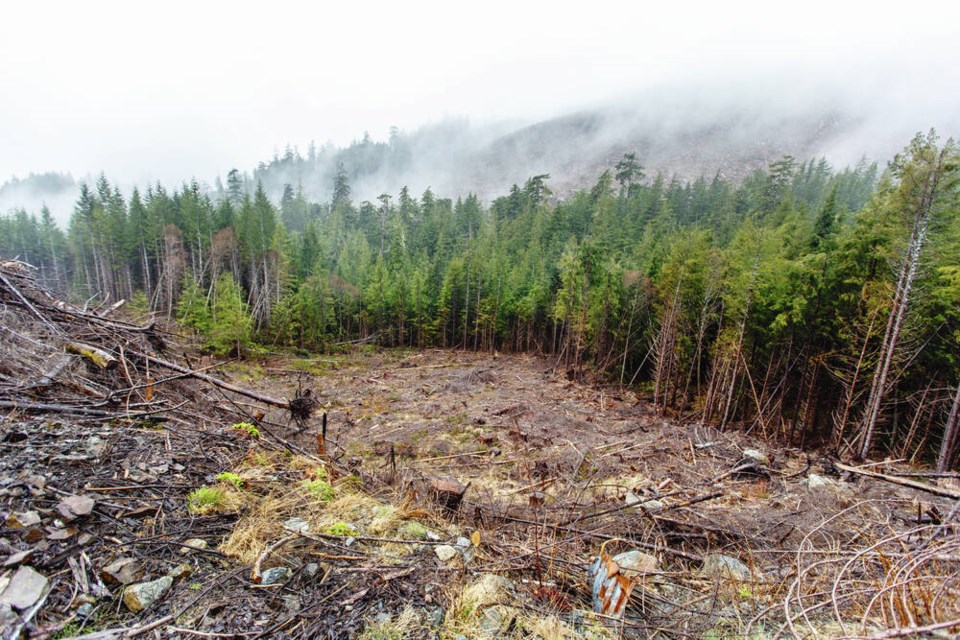BC
Old-growth deferrals will impact operations in Fairy Creek area: Teal Jones

The forestry company that has the tree farm licence for the Fairy Creek area where protests have been raging for 17 months says the province’s plans for old-growth logging deferrals will have an impact on its operations.
On Tuesday, B.C. asked First Nations to decide within 30 days whether they support two-year logging deferrals in 26,000 square kilometres of old-growth forests considered at risk of irreversible biodiversity loss.
Conrad Browne, director of Indigenous partnerships and strategic relations for Teal Jones, said there are areas within the company’s licence and approved cut blocks that will be affected, but exactly how much and how it will affect company operations isn’t yet clear.
“Until we do more detailed mapping and get leather [boots] on the ground, we will not know what those impacts will be on the company,” Browne said, adding it will also depend on First Nations partners.
“We do know we will not be immune in this process.”
Browne couldn’t speculate on the number of jobs that could be lost with the deferrals. Teal Jones has 1,000 employees ranging from fallers to workers at its mills.
The province’s plan is expected to ripple through the forestry sector and have “a devastating impact,” according to the Canadian Council of Forest Industries. The group estimates up to 20 sawmills and two pulp mills could be shuttered, and 18,000 jobs could be lost.
The province’s own analysis says up to 4,500 forestry jobs could be lost if all deferrals are approved, but it has promised support for affected workers and assistance to communities to adapt to change.
‘TOO LITTLE, TOO LATE’
Kathleen Code, a spokeswoman for the Rainforest Flying Squad, which continues to protest Teal Jones’ operations in the Fairy Creek area near Port Renfrew, welcomed the two-year deferral on old-growth parcels, saying “it’s a start, but … it’s too little, too late.”
“Government is finally, at the 11th hour, recognizing the value of B.C.’s old growth forests as important ecosystems necessary to the health and well being of communities and citizens,” Code said.
“They are only just beginning to perceive that forests are more than standing fibre.”
However, she said, two-year deferrals are not enough to proclaim that old-growth forests are saved.
“We need permanent moratoriums, not temporary deferrals,” she said. “Two years provides industry and their lobbyists with a great deal of time to pressure government into getting what they want, which is all the old growth from which they can make a profit.”
The protest group compiled its own mapping of old-growth protected areas in Teal Jones’ Tree Farm Licence 46, but many of the sites were disputed by the company, which said some areas were outside its licence area, some were all second-growth and others were locations with “dead and down” permits, where storms blew down trees.
Browne said of the 600 square kilometres in its licence, 60% of the old-growth forests are already protected in park systems or protected Old Growth Management Areas, or are unharvestable because they are inaccessible. About 200 hectares were available to cut up to the north ridge of the Fairy Creek watershed — which has been protected for years — but roadbuilding to an approved 20-hectare cut block was stopped when the Pacheedaht First Nation issued a two-year moratorium in June.
FIRST NATIONS ANNOUNCE MORATORIUMS
The Pacheedaht First Nation in Port Renfrew, which operates a mill in TFL 46, has announced a moratorium on logging old growth within its territory while the nation determines cultural significance and best uses for the trees.
The Ditidaht and Huu-ay-aht First Nations have made similar declarations in their territories.
“From now on, our First Nations will decide what is best for our lands, our waters and our resources for the sustainment and well-being of present and future generations of Ditidaht, Huu-ay-aht and Pacheedaht people,” said a statement from the Pacheedaht on Friday.
In addition to deferring old-growth logging, the three First Nations are undertaking integrated resource management planning to determine how best to manage the resources in their territories. The statement said the work will draw on the teachings of ancestors, wisdom of elders, input from citizens and partners and experts in forestry and fisheries.
The Port Alberni-based Huu-ay-aht First Nation, through its investment company, Huumiis Ventures, has acquired a 35% stake in TFL 44 — a wide swath from the Alberni valley to the coast — with a goal of eventually owning a majority stake. TFL 44 has an annual allowable harvest of 780,000 cubic metres of timber, which flows to Western’s six mills on Vancouver Island, including its Alberni Pacific division, where the Huu-ay-aht also hold a 9% stake.
Head Hereditary Chief Derek Peters and Elected Chief Councillor Robert J. Dennis Sr. will host a summit on Nov. 23 to hear from forestry professionals regarding what they call “discrepancies in the scientific data.”
They say the government’s need for large-scale deferrals is based on the “untested assertion” in 2020 by technical advisers to the province that there is only 3% of productive old growth left in B.C. Other technical advisers say put the figure at 30%.
While the province has asked First Nations to weigh in 30 days, it noted that they may need more time to incorporate local knowledge into the deferral plans, such as identifying and including old-growth forests that are at risk but missing from B.C.’s maps.
The Huu-ay-aht First Nation said it expects to be in a position to make a decision by Jan. 15.
“As the rights and title holders who make the final decisions on forestry in our territory, Huu-ay-aht needs to close this science gap,” the chiefs said. “We will take the time we need to get it right.”
CONCERNS OVER LACK OF SUPPORT
Indigenous leaders have expressed concern over the 30-day timeline and the lack of support in the province’s old-growth deferral plan.
A 30-day time frame for such complex analysis is “totally unreasonable,” Grand Chief Stewart Phillip of the Union of B.C. Indian Chiefs said in an interview.
In the meantime, the government is still allowing logging in the old-growth ecosystems identified as being at risk of permanent loss, Phillip said.
The First Nations Leadership Council, which includes the executives of the chiefs union, the B.C. Assembly of First Nations and the First Nations Summit, issued a statement saying it was “extremely concerned … that the province has passed responsibility to First Nations without providing financial support for nations to replace any revenues that might be lost if they choose to defer logging old growth in their territory.”
B.C.’s deferral plan includes $12.7 million over three years to support First Nations.
That amounts to about $20,000 per year for each of more than 200 First Nations across B.C., said Phillip, calling the funds “totally insufficient to undertake the work.”
Critics of the old-growth deferrals say the government’s technical advisory panel was stacked, with four of the five members having ties to the Sierra Club.
The United Steelworkers Local 1-1937, which represents about 12,000 workers in the province, said it was completely left out of the process of reforming the industry.
dkloster@timescolonist.com
— With files from The Canadian Press and Vancouver Sun





























 ©
©

